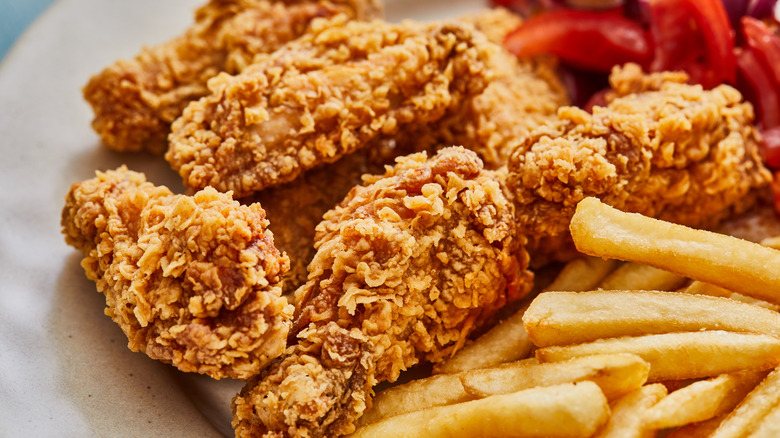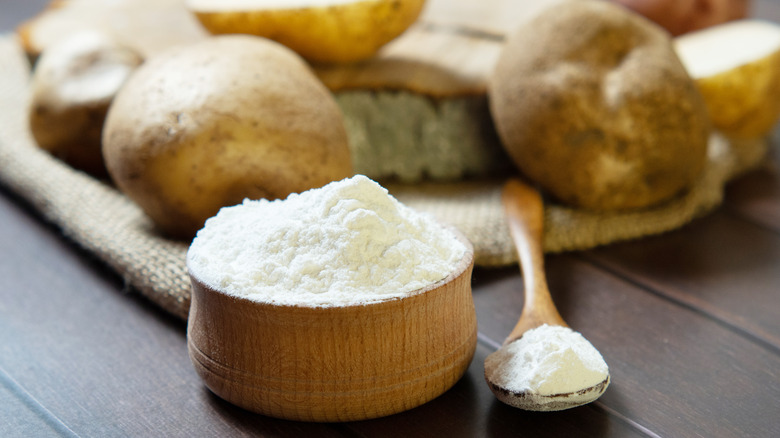Potato Starch Is The Magic Ingredient For Crunchy Fried Chicken
All kinds of foods benefit from cross-cultural pollination of ideas, and if you are searching for the perfect combination of ingredients for your fried chicken, overseas is the place to look. Here in the U.S., the classic Southern fried chicken is still the standard, but the love for fried bird knows no boundaries, and global styles of fried chicken have been gaining a foothold in the American markets for years.
While there is great fried chicken from as far afield as Italy or India, some of the most popular transplants have been coming from East Asia, with saucy Korean fried and bite-sized Japanese karaage earning devoted followings from masses of fans outside their home countries. There are plenty of reasons for the love, and one of the biggest is the texture, as these styles are not only beautifully crispy but stay that way far longer than most of their American counterparts. Thankfully, the secret to this perfect fried chicken crunch is well known among chefs: potato starch.
Potato starch gives a big boost to fried chicken batter because it does triple duty in maintaining crispness. It absorbs moisture and concentrates it, making it easier for water to be driven out during the cooking process, it prevents the formation of gluten in flour, keeping the crust from getting too chewy, and starch molecules also bond with each other in a porous network, creating that brittle crunchy texture. Of your scratch choices, potato starch does the job the best.
Fried chicken batter gets crispy and stays that way longer with potato starch
Cornstarch is the other option that cooks turn to for crispy fried chicken, and it also works very well, but potato starch has a few advantages over it. Potato starch cooks faster than cornstarch does, which helps it incorporate into batters quicker as it cooks, producing a more coherent texture. The biggest difference is the size of the starch granules. Potato starch has a larger structure, which helps it form a more rigid bond compared to the crunchy but brittle texture of chicken fried with cornstarch. And in a bit of an ironic twist, cornstarch actually does its job of absorbing moisture too well, as potato starch's structure traps less moisture, helping it to be driven off during cooking. This also means that potato starch doesn't undergo retrogradation and soften as quickly as cornstarch does after cooking.
However, while some recipes call for 100% potato starch to coat fried chicken, the best option is a mix of potato starch and flour. Starch only coatings can be too thin and brittle, but flour helps with browning for flavor and adding a more robust thickness to the end result. So, instead of starch only, opt for a 50-50 mix of potato starch and flour for the best of both worlds. Stick with everything else you love, like a classic fried chicken buttermilk brine, but no matter what style of fried chicken you make, don't skip the potato starch.

